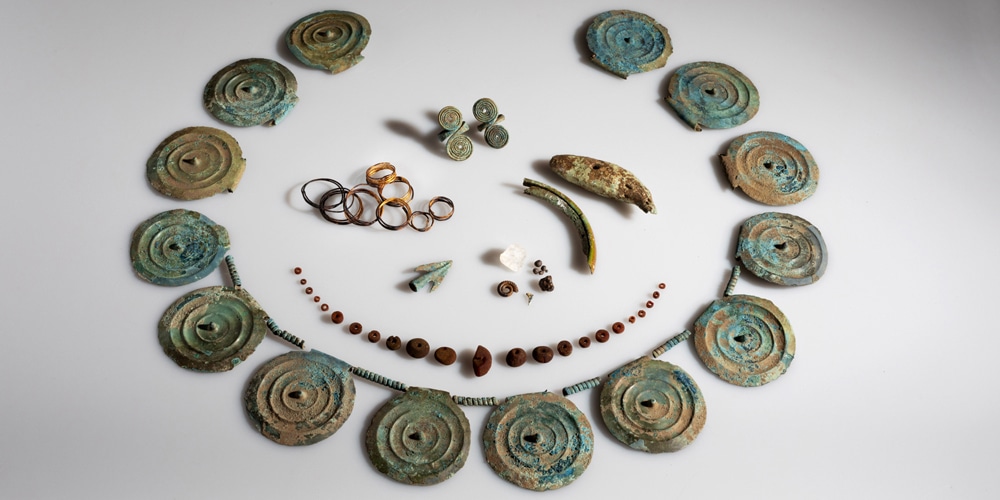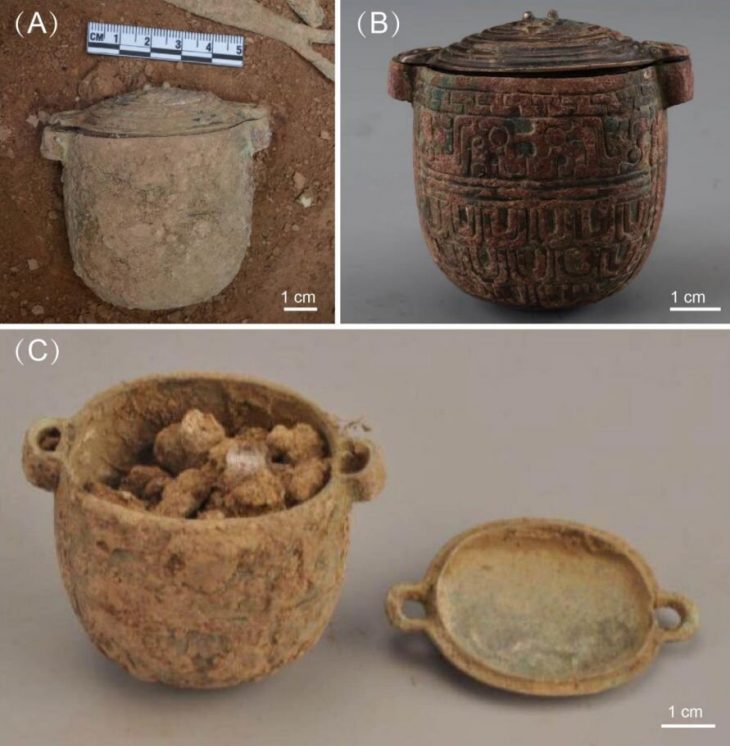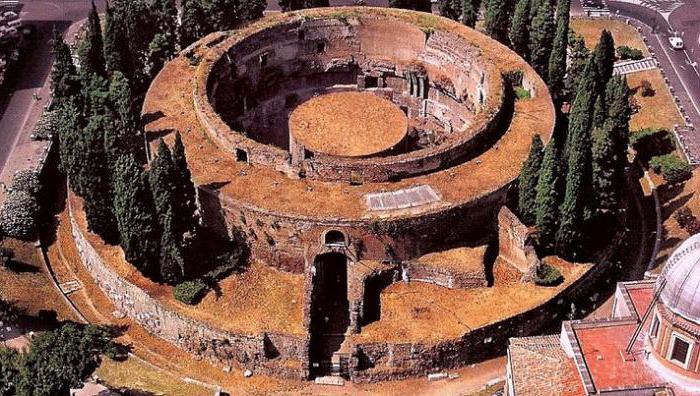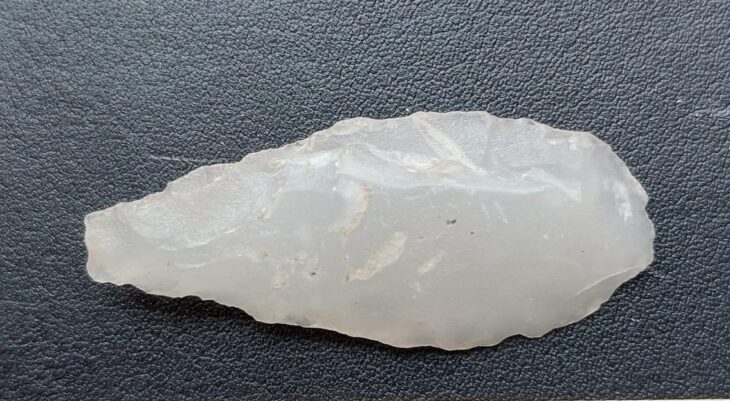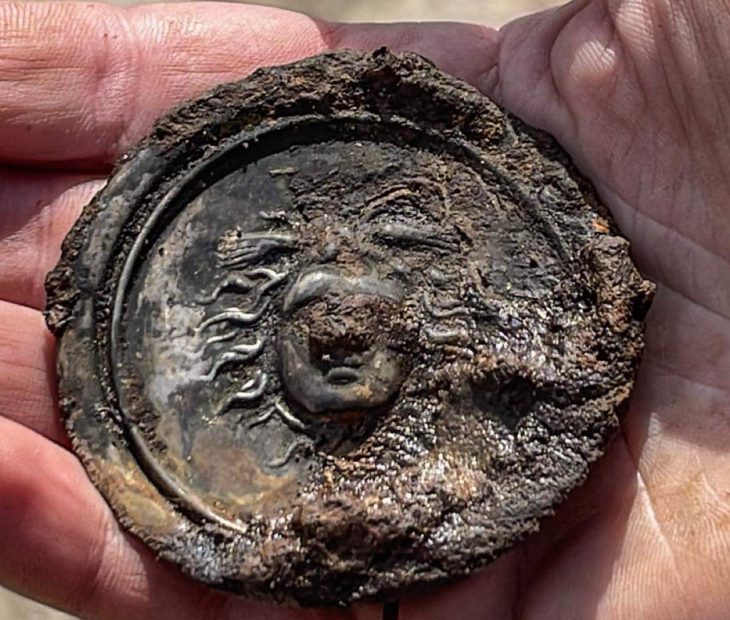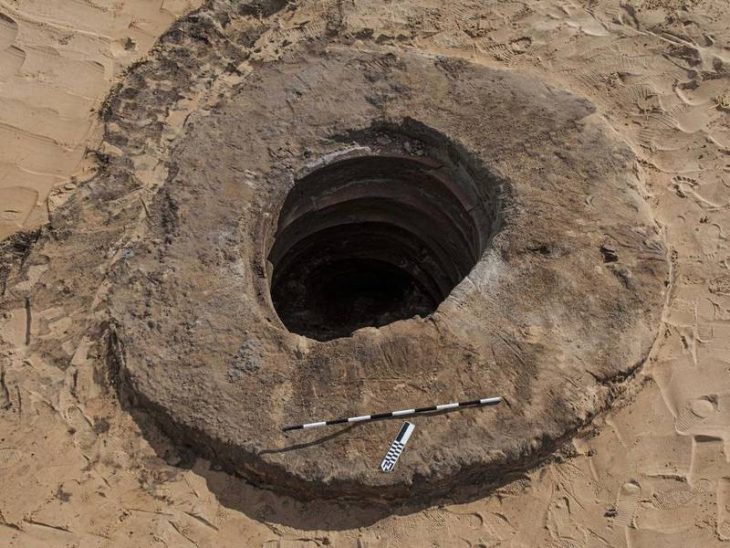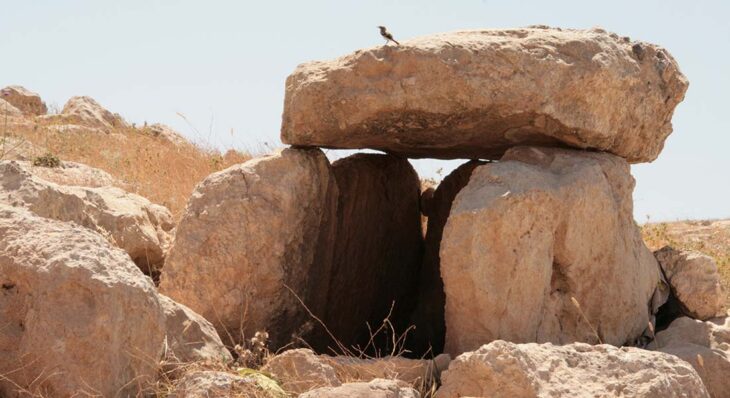A set of Bronze Age women’s jewelry was discovered by archaeologists in Güttingen, Thurgau canton, northeastern Switzerland, in a freshly plowed carrot field.
The set, which dates to around 1,500 B.C., includes a necklace made of bronze spiked discs, two spiral finger rings, more than one hundred pinhead-sized amber beads, and spirals made of bronze and gold wire. A rock crystal, a beaver tooth, a perforated bear tooth, a bronze arrowhead, a few lumps of polished iron ore, a small ammonite, and a fossilized shark tooth were among the more unusual items discovered with these opulent items.
An amateur archaeologist named Franz Zahn discovered the treasure for the first time in August of this year. After the carrots were harvested, he was traipsing through the field when he noticed some bronze discs in the disturbed ground. Zahn, an enthusiastic metal detectorist who has found a number of Iron and Bronze Age artifacts in the Güttingen region, recognized the artifacts’ archaeological importance right away and notified the Thurgau Office of Archaeology.
With the farmer’s permission, the team from the Office of Archeology arrived the next day and quickly realized that only block recovery, that is, the removal and transfer of a larger area of earth of around 50x50x50 cm with the not yet visible finds to the laboratory. At the same time, the small excavation made it clear: There was no evidence of a grave. The jewels were probably buried in an organic container or sack.

The soil block was transported to the Frauenfeld conservation laboratory for excavation. Throughout the process, each discovery layer was meticulously documented. A similar find had already been discovered near Etzwilen two years ago.
📣 Our WhatsApp channel is now LIVE! Stay up-to-date with the latest news and updates, just click here to follow us on WhatsApp and never miss a thing!!
These are typical “costume jewelry” from the Bronze Age, more precisely the Middle Bronze Age around 1500 BC. In total, 14 bronze discs were discovered. Spiked discs get their name from the round pointed nub in the center, which is surrounded by three concentric circles. Originally, each of the holes on the discs would have been used to thread a string or a leather strap, with spirals threaded in between them to act as spacers. On the site, there were eight larger gold wire spirals and eleven bronze wire spirals.
As finds from graves show, women wore necklaces with these eye-catching discs, with spirals strung between them as spacers. Eleven of these spirals were found in Güttingen. In addition, eight slightly larger spirals made of fine gold wire appeared, which weigh a total of over 21 grams. More than 100 amber beads and two finger rings with double spirals complete the ensemble.
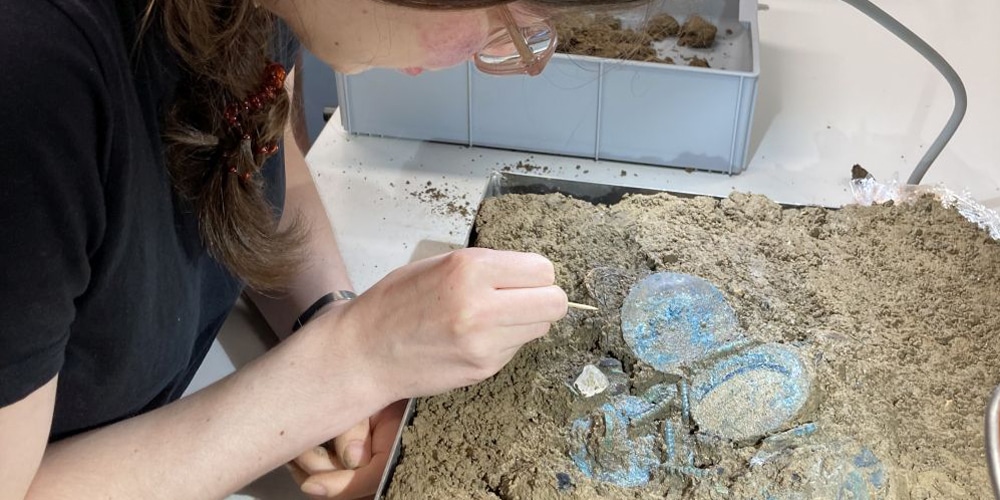
Was there a jewelry box hidden here? Were the bear tooth, the rock crystal and the selected fossils and stones a collection of curiosities or souvenirs from a visit to Klettgau? Or is there even more to it? Objects of this type may have been considered to have a special, protective or healing effect and may have been worn as a kind of amulet.
The set is scheduled to go on display at the Frauenfeld Museum of Archeology next year.
Cover Photo: Thurgau Canton

